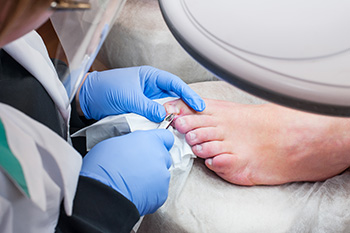
The Winograd Procedure is a common surgical treatment for chronic or recurring ingrown toenails that do not respond to conservative care. During this procedure, the podiatrist removes a small portion of the affected nail and surrounding tissue to prevent the nail from growing into the skin again. The goal is to eliminate pain, infection, and inflammation while preserving the natural shape of the toe. Most patients experience quick relief and can return to normal activities within a short time. However, as with any surgery, there are potential risks. These may include infection, delayed healing, minor bleeding, or temporary tenderness around the treated area. In rare cases, nail regrowth or persistent discomfort may occur. Following proper post-procedure instructions and keeping the site clean greatly reduces these risks. For safe, lasting relief from ingrown toenails, it is suggested that you consult a podiatrist experienced in this procedure.
Ingrown toenails can become painful if they are not treated properly. For more information about ingrown toenails, contact Dr. Howard Horowitz of Bowie Foot & Ankle . Our doctor can provide the care you need to keep you pain-free and on your feet.
Ingrown Toenails
Ingrown toenails occur when a toenail grows sideways into the bed of the nail, causing pain, swelling, and possibly infection.
Causes
- Bacterial infections
- Improper nail cutting such as cutting it too short or not straight across
- Trauma to the toe, such as stubbing, which causes the nail to grow back irregularly
- Ill-fitting shoes that bunch the toes too close together
- Genetic predisposition
Prevention
Because ingrown toenails are not something found outside of shoe-wearing cultures, going barefoot as often as possible will decrease the likeliness of developing ingrown toenails. Wearing proper fitting shoes and using proper cutting techniques will also help decrease your risk of developing ingrown toenails.
Treatment
Ingrown toenails are a very treatable foot condition. In minor cases, soaking the affected area in salt or antibacterial soaps will not only help with the ingrown nail itself, but also help prevent any infections from occurring. In more severe cases, surgery is an option. In either case, speaking to your podiatrist about this condition will help you get a better understanding of specific treatment options that are right for you.
If you have any questions, please feel free to contact our office located in Bowie, MD . We offer the newest diagnostic and treatment technologies for all your foot care needs.
